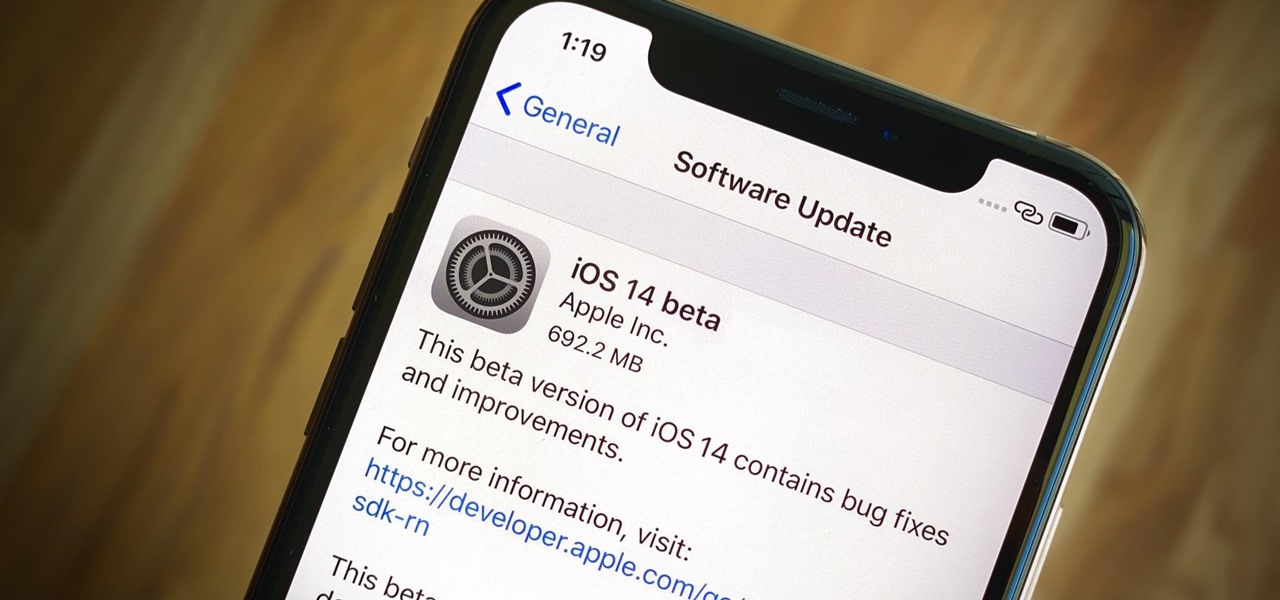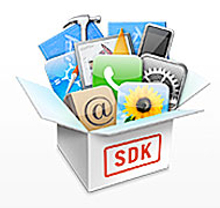On particular versions of Mac OS X, or use the iPhone SDK to build applications for the iPhone Simulator, the iPhone, or iPod touch. The tools included with the SDK will upload your application to a device, and debug directly from the IDE. Xcode for Mac development is included as part of the iPhone SDK installer, and is also. On particular versions of Mac OS X, or use the iPhone SDK to build applications for the iPhone Simulator, the iPhone, or iPod touch. The tools included with the SDK will upload your application to a device, and debug directly from the IDE. Xcode for Mac development is included as part of the iPhone SDK. Apps could be run directly on an iPhone, or on the host Mac via the new iPhone emulator. To say that people were excited to get their hands on the SDK is an understatement. Anyone could download it and start writing an iPhone app, no matter their background or level of experience.
A software development kit (SDK) provides a set of files to build applications for a target platform, and defines the actual location of those files on the target platform or an intermediate platform that supports the target platform.
Download Apple iPhone SDK for Mac to access iPhone development environment. This PC computer is connected to a Mac running the Platform Assistant and having installed the appropriate versions of Xcode and iOS SDK (for iOS development). To run iOS apps on an iOS device, the iOS device should be connected via USB cable to the Mac.
The Mac OS X platform provides SDKs for the following target platforms that RAD Studio supports:
To be able to get the iOS SDK on your Mac, you have to download Apple's Xcode IDE which bundles it. Besides the software development kit, Xcode also provides you with access to a wide array of. Copy the evernote-sdk-ios source code into your Xcode project. Add the evernote-sdk-ios xcodeproj to your project/workspace. Build the evernote-sdk-ios as a static library and include the.h's and.a. IOS Software Development Kit (SDK) it is a mobile operating system of Apple phone which is working on iOS in this connection ipod and I pad also associated this iOS (SKD) and it is based device. Apple provides for their users interactive development environment (IDE).
- Mac OS X
- 64-bit iOS Device
- 32-bit iOS Device
- iOS Simulator
When you develop either Delphi or C++ applications for one or more of these target platforms, you must use the SDK Manager to add to RAD Studio an SDK for each target platform.
Download Ios Sdk
To add a new Mac OS X or iOS SDK to your development system from a Mac:
- Select Tools > Options > Environment Options > SDK Manager.
- Click the Add button.
- On the Add a New SDK dialog box, select a platform from the Select a platform drop-down list.
- The items in the Select a profile to connect drop-down list are filtered by the selected platform.
- Select a connection profile from the Select a profile to connect drop-down list, or select Add New to open the Create a Connection Profile wizard and create a new connection profile for the selected platform.
- The Select an SDK version drop-down list displays the SDK versions available on the target machine that is specified in the chosen connection profile.
- Select an SDK from the Select an SDK version drop-down list. For details and troubleshooting, see SDK Manager.
- Notes:
- RAD Studio does not support versions of the iOS SDK lower than 8.0.
- iOS applications built with a given SDK version may only run on that version or later versions of iOS. For example, an application built with version 9 of the iOS SDK might crash on a device running iOS 8.
- Notes:
- Check Mark the selected SDK active if you want the new SDK to be the default SDK for the target platform.
- Click OK to save the new SDK.
The files from the remote machine are pulled into the development system, so you can keep a local file cache of the selected SDK version. The local file cache can be used to build your applications for the SDK target platform.
After you create an SDK, you may change the local directory of your development system where RAD Studio stores its files.
If you do not create an SDK in advance, you can add one the first time you deploy an application to the remote machine. The Add a New SDK window appears where you can select an SDK version. Cla 2a compressor.
See Also
Skip to end of metadataGo to start of metadata
- Compatibility and download
- Xcode
- iOS SDK / Target iOS platform
- Installation (iOS-only)
 Icon
IconDue to Apple's terms and conditions, the iOS SDK may only be installed on Apple products, hence only instructions for installing to Apple's macOS operating system are provided here.
Overview
This guide describes where to obtain and how to install the Xcode developer tools including the iOS and watchOS SDKs.
Compatibility and download
Titanium requires Xcode to be installed in order for you to develop iOS applications.
There are two ways to obtain Xcode, the application that installs and manages iOS SDKs:
- Launch the App Store application, found in the
Applicationsfolder, and search for and install 'Xcode' (includes the stable iOS and watchOS SDKs). - Enroll with the Apple Developer website and browse the iOS Developer Center page to manually download the installer application (includes all previously-released iOS SDKs and new Beta versions).

Both of the above options are free of charge, although may require credit card details to be entered. Since 2016, you can also test your apps on your device using the free Apple developer program. If you wish to deploy your applications to the App Store for production, however, you will need to become a member of the iOS Developer Program, by way of an annual subscription charge of $99 at the time of writing.
Xcode
To develop for iOS, Titanium requires Apple's Xcode suite of tools.
Each Titanium SDK supports a specific range of Xcode versions, shown in the table below.
Supported versions of Xcode
Titanium SDK Version | Min Xcode Version | Max Xcode Version | Notes |
|---|---|---|---|
| 9.3.0 - latest | 11.0.0 | 12.x | |
| 9.2.0 - 9.2.2 | 11.0.0 | 12.x | Full support for iOS 14 and beta support for macOS via Mac Catalyst |
| 9.0.0 - 9.1.0 | 9.0.0 | 11.x | Dropped iOS 9 support |
| 8.3.0 - 8.3.1 | 8.0.0 | 11.x | |
| 8.2.0 - 8.2.1 | 8.0.0 | 11.x | Full support for iOS 13 |
| 8.0.0 - 8.1.1 | 8.0.0 | 10.x |
Unsupported versions of Xcode
Titanium SDK Version | Min Xcode Version | Max Xcode Version | Notes |
|---|---|---|---|
| 7.5.0 - 7.5.2 | 8.0.0 | 10.x | |
| 7.4.0 - 7.4.2 | 8.0.x | 10.x | Full support for iOS 12 |
| 7.0.0 - 7.3.1 | 6.0.x | 9.0.x | |
| 6.3.0 | 6.0.x | 9.0.x | |
| 6.2.x | 6.0.x | 9.0.x | Full support for iOS 11 |
| 5.5.x - 6.1.x | 6.0.x | 8.0.x | |
| 5.0.0 - 5.4.0 | 6.0.x | 7.0.x | |
| 4.0.0 - 4.1.x | 6.0.x | 6.4.x | |
| 3.4.0 - 3.5.x | 6.0.x | 6.0.x |
Deploying for iOS 11.x requires Xcode 9.x, and macOS 10.12.4 and later.
Deploying for iOS 12.x requires Xcode 10.x, and macOS 10.13.6 and later.
Download Latest Ios For Mac
As per apple guidelines, Starting April 2020 all apps submitted to App Store must be built with iOS 13 SDK or later, included in Xcode 11 or later.
iOS SDK / Target iOS platform
Each Titanium SDK supports a specific range of iOS base SDKs and deployment targets. To build an application for a specific iOS target version, you must have the appropriate iOS SDK installed.
Supported versions of iOS SDK / Target iOS platform
Iphone Sdk Download For Mac
Titanium SDK version | Minimum iOS SDK version | Maximum iOS SDK version | Minimum target iOS version | Maximum target iOS version |
|---|---|---|---|---|
| 9.2.0 - latest | 13.0.0 | 14.x | 10.0 | 14.x |
| 9.0.0 - 9.1.2 | 11.0.0 | 13.x | 10.0 | 13.x |
| 8.2.0 - 8.3.1 | 10.0.0 | 13.x | 9.0 | 13.x |
| 8.0.0 - 8.1.1 | 10.0.0 | 12.x | 9.0 | 12.x |
Unsupported versions of iOS SDK / Target iOS platform

Titanium SDK version | Minimum SDK version | Maximum SDK version | Minimum target iOS version | Maximum target iOS version |
|---|---|---|---|---|
| 7.4.0 - 7.5.x | 8.0.0 | 12.x | 8.0 | 12.x |
| 7.0.0 - 7.3.x | 8.0.0 | 11.x | 8.0 | 12.x |
| 6.2.0 - 6.3.x | 8.0.x | 11.x | 8.0 | 12.x |
| 6.0.0 - 6.1.x | 8.0.x | 10.x | 8.0 | 12.x |
| 5.5.x | 8.0.x | 10.x | 7.1.x | 9.3.x |
| 5.0.0 - 5.4.x | 8.0.x | 9.3.x | 7.1.x | 9.3.x |
| 4.0.0 - 4.1.x | 8.0.x | 8.4.x | 7.1.x | 8.4.x |
| 3.4.0 - 3.5.x | 8.0.x | 8.0.x | 7.1.x | 8.0.x |
| 3.2.2 - 3.3.0 | 7.0.x | 7.1.x | 6.1.x | 7.1.x |
| 3.1.3 - 3.2.1 | 7.0.x | 7.0.x | 6.1.x | 7.0.x |
| 3.1.1 - 3.1.2 | 5.0.x | 6.1.x | 5.0.x | 6.1.x |
| 3.1.0 | 4.3.x | 6.1.x | 4.3.x | 6.1.x |
2.1.3 - 3.0.x | 4.0.x | 6.1.x | 4.0.x | 6.1.x |
2.1.0 - 2.1.2 | 4.0.x | 5.1.x | 4.0.x | 5.1.x |
2.0.x | 4.0.x | 5.1.x | 4.0.x | 5.1.x |
1.8.x | 4.0.x | 5.0.x | 4.0.x | 5.0.x |
1.7.1+ | 3.1.2 | 5.0.x | 3.1.2 | 5.0.x |
Iphone Sdk Download For Mac
Installation (iOS-only)
Note that the typical file system location of this software can be found in the mac OS Software Locations section of these guides.
Install Xcode
To install the current version of Xcode, use the Mac App Store:
- Launch the App Store application from the Applications folder
- Search for 'Xcode'
- Click the Free button, then Install App button
The App Store starts the download and installation process.
To install previous versions of Xcode, download and run the installer application from iOS Developer Center: Downloads for Apple Developers.
- Go to https://developer.apple.com/download/more/ (Requires an Apple Developer account)
- Search for 'Xcode'
- Locate the Xcode version you want to install and click the link to start downloading it.
- Once the download completes, launch the installer application and follow the directions.
Launch Xcode
To confirm that Xcode has been installed correctly, launch it from Applications. When installing Xcode the first time, you are also prompted to accept the End User License Agreement (EULA) and are being asked to installed required components. These will be downloaded once accepted.
Update Xcode using Xcode installer
When new versions of the SDK are released, launch the App Store and click the Updates icon. If Xcode appears, click the Update button.
Ios Sdk Download For Mac Windows 10
Install the Command Line tools and previous simulators
The Xcode command-line tools are required for native add-on module development and recommended to be installed for mobile application development. You can either install the command-line tools from Xcode or by running the xcode-select command from a terminal.
To install the command-line tools or older simulator from Xcode:
Iphone Sdk Download For Mac Download
- Launch Xcode.
- Select Xcode > Preferences.
- Select the Components icon and click the Install button next to the Command Line Tools item.
- If desired, you can install older simulators.
To install the command-line tools from a terminal, run the following command under 'sudo' permissions:
Select the active Xcode version
For systems with multiple Xcode versions installed, the current version can be selected by running sudo xcode-select at the command-line.
For example:
Ios Sdk Download For Mac Os
Apple Iphone software, free download
If you are using Studio, you need to restart Studio for your changes to take effect.
Configure Studio and the CLI
Both Studio and the CLI use the xcode-select command to obtain the location of the Xcode tool to use when building your iOS applications. Neither tool requires any additional configuration.
You can select a default iOS simulator type to launch after building your application. Open the Preferences dialog by selecting Axway Appcelerator Studio > Preference from the menu bar, then navigate to Studio > Platforms > iOS and select a simulator type from theDefault Displaydrop-down menu.
Note for Mavericks (and later)
If you are using maxOS 10.9+ and packaging an iOS application to the iTune Stores, after the Xcode Organizer is launched, a dialog from your maxOS may open stating, 'UI element scripting is not enabled. Check 'Enable access for assitive devices'.
This message is misleading as this was the name of the setting in previous versions of macOS, which is already enabled by default on the older versions.
On Mavericks and later, to fix this issue:
- Open System Preferences from the Apple Menu.
- Click Security & Privacy.
- Click the Privacy tab.
- If the dialog is locked (bottom-left corner), unlock it.
- Click Accessibility from the left list.
- Enable either Terminal (if you are using the CLI) or AppceleratorStudio when using Studio.
- Close the System Preferences.
Comments are closed.